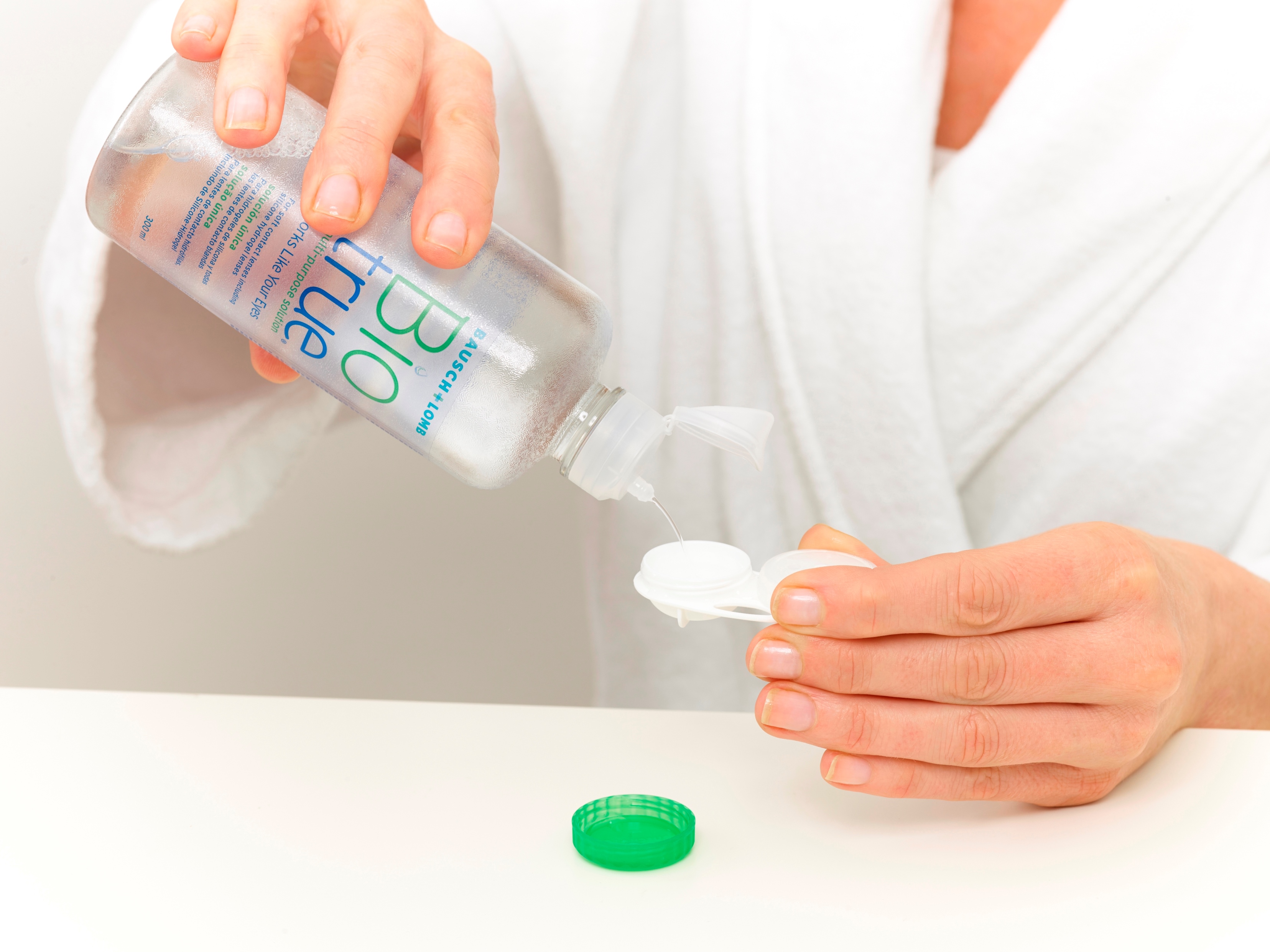

Contact lenses are a medical device which require a prescription^1^… even if they are not for vision correction. When you have an eye exam, your eye care professional will assess the health of your eyes and also check for short-sightedness (myopia), long-sightedness (hyperopia), and astigmatism. While you look at an eye chart, your eye care professional will measure your vision precisely, and, if necessary, determine a prescription for corrective lenses.
Regular check-up examinations by your eye care professional are an important part of wearing contact lenses. And we recommend that you always follow your eye care professional's directions.
Contact lenses are designed for specific wearing times. Depending on what’s best for your eyes, your eye care professional may recommend a lens designed for daily replacement, or a lens designed for frequent/planned replacement.
It’s really important to follow the replacement schedule your eye care professional gave you – it tells you when you need new lenses. Following it will help keep your eyes healthy and comfortable – so make sure you stick to it.

Cleanliness is an important aspect of proper contact lens care and handling of your new lenses. Your hands should be clean and free of any foreign substances when you handle your lenses:
Get into the habit of using proper procedures so that they become automatic.
Biotrue® solution conditions, cleans, removes protein, disinfects, rinses and stores soft contact lenses including silicone hydrogel contact lenses.
These steps are recommended when using Biotrue® Solution for a healthy and comfortable contact lens wearing experience^3^:
[Alternatively, watch the video Wearing and Caring Contact Lens with Biotrue MPS solution]
STEP 1: Place at least 3 drops of Biotrue® multi-purpose solution on each side of lens surface and gently rub for 20 seconds. Only use fresh solution to clean and disinfect contact lenses.
STEP 2: Thoroughly rinse each side of the lens for 5 seconds with Biotrue®multi-purpose solution.
STEP 3: Place cleaned contact lenses in the lens case and fill with fresh Biotrue® multi-purpose solution. Soak at least 4 hours.
Remember to always use fresh solution – discard solution from lens case after each use. Your contact lenses are now ready to wear. If any debris remains on contact lenses, rinse with Biotrue® multi-purpose solution prior to insertion.
Store: If not wearing contact lenses immediately, store them in a closed lens case. Do not store your lenses in simple saline in place of Biotrue® multi-purpose solution. Saline solution will not disinfect. Lenses may be stored in the unopened case until ready to wear, up to a maximum of 30 days. If you store your lenses for longer periods of time, they must be cleaned and disinfected with fresh Biotrue® multi-purpose solution prior to lens insertion.
1. The College of Optometrists. The fitting process. Available at:[http://guidance.college-optometrists.org/guidance-contents/knowledge-skills-and-performance-domain/fitting-contact-lenses/fitting-contact-lenses/]
2. British Contact Lens Association. Acanthamoeba and contact lenses. Available at: [http://bcla.org.uk/Public/Consumer/Acanthamoeba_and_contact_lenses.aspx]
3. Bausch and Lomb. How to use Biotrue MPS. Available at: [http://www.bausch.co.uk/en-gb/our-products/contact-lens-care/soft-contact-lens-multipurpose-solutions/biotrue-multi-purpose-solution/video-how-to-use-biotrue/index.html]
4. British Contact Lens Association. Here are some useful tips on contact lens wear. Available at:[http://bcla.org.uk/Public/Consumer/Important_dos_and_dont_s_of_contact_lens_wear.aspx]
Select an Age Group